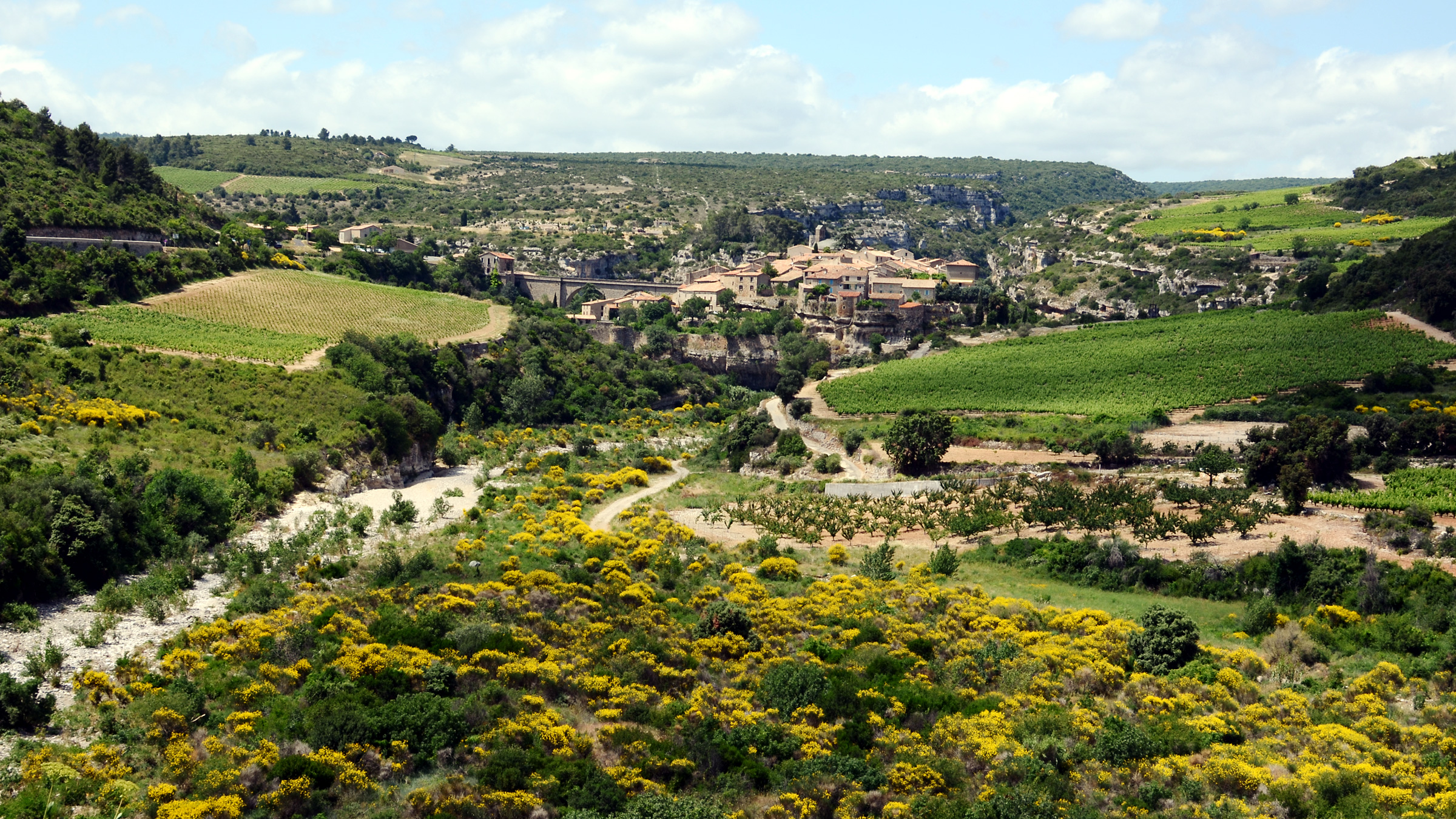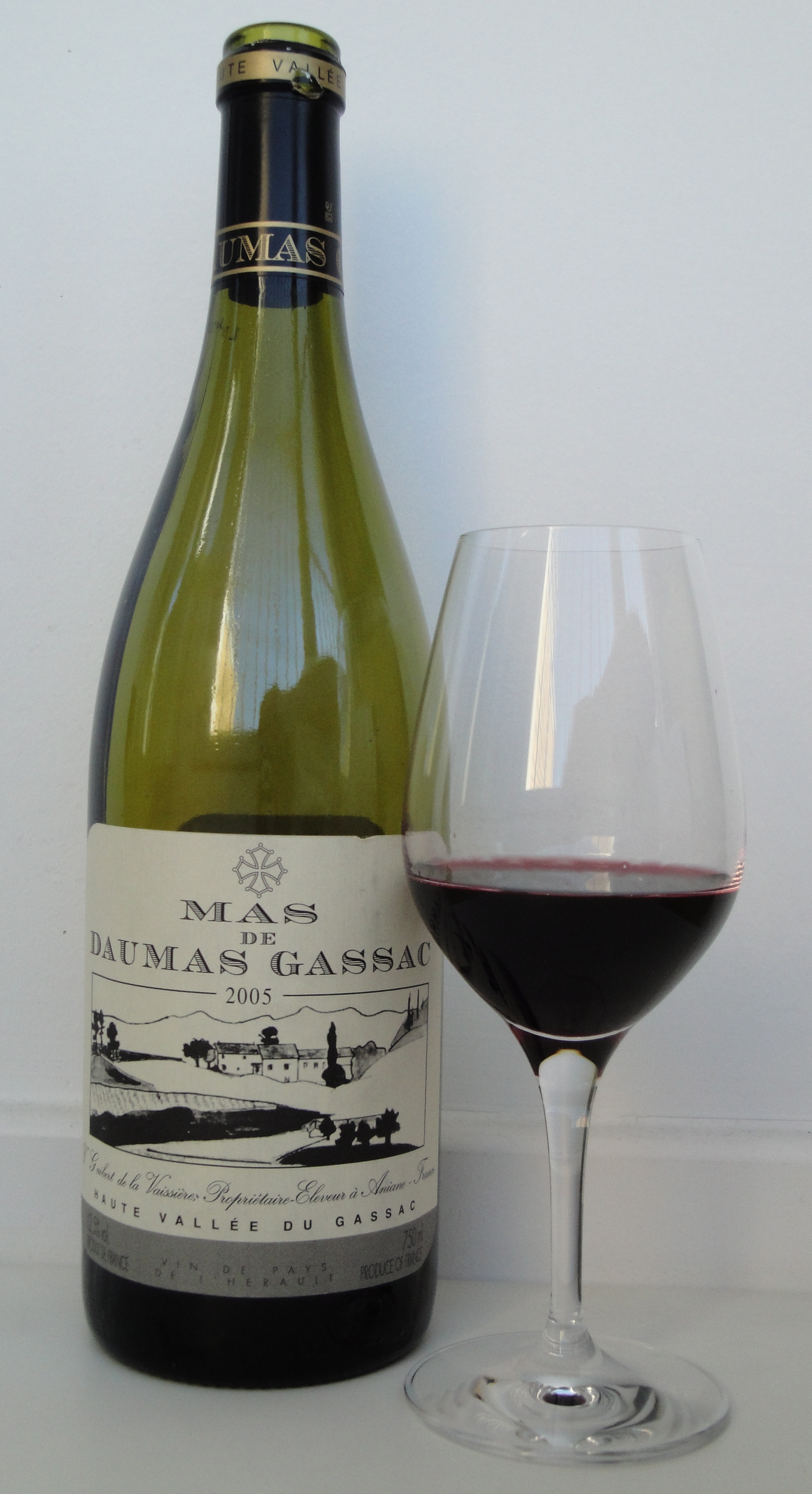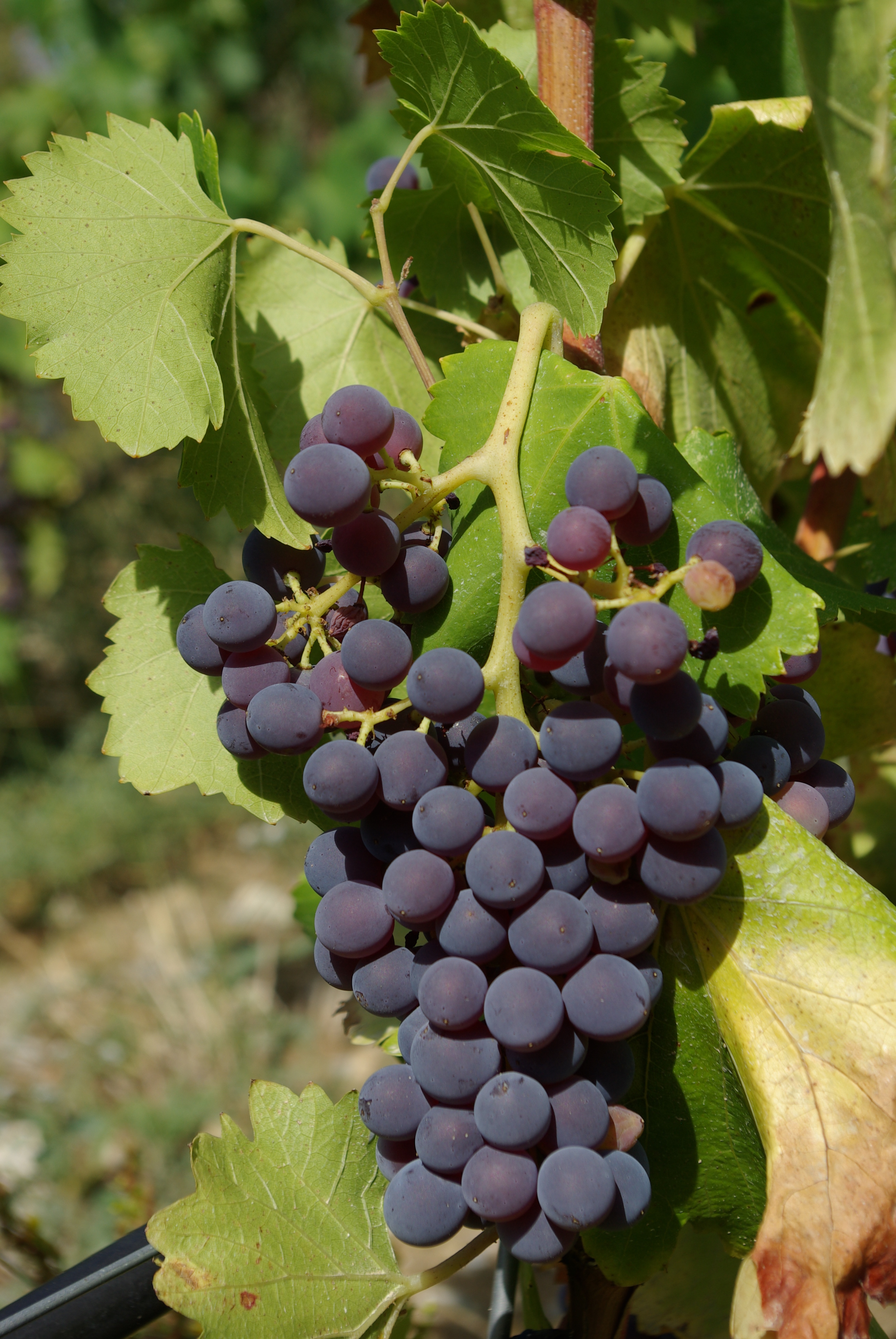|
Minervois
Minervois is an AOC in the Languedoc-Roussillon wine region, in the departments of the Aude and of the Herault. Historically, the region's capital has been the village of Minerve. AOC regulations require the wine to be blended (at least 2 varieties), so pure varietal wines must be Vin de Pays. The red wines of the Minervois appellation are produced from Syrah and Mourvedre, Grenache and Lladoner Pelut (minimum 60%); and Carignan, Cinsault, Piquepoul, Terret, and Rivairenc (maximum 40%). In any case Syrah and Mourvedre needs to be at least 20% of total, and Piquepoul, Terret, and Rivairenc needs to be no more than 10%. The white wines, which are less commonly found, may include Marsanne, Roussanne, Maccabeu, Bourboulenc, Clairette, Grenache, Vermentino Vermentino is a light-skinned wine grape variety, primarily found in Italian wine. It is widely planted in both Sardinia and Liguria (wine), Liguria, to some extent in Corsica, in Piedmont under the name Favorita, and in incre ... [...More Info...] [...Related Items...] OR: [Wikipedia] [Google] [Baidu] |
Languedoc-Roussillon Wine
Languedoc-Roussillon wine, including the ''vin de pays'' labeled ''Vin de Pays d'Oc'', is produced in southern France. While "Languedoc" can refer to a specific historic region of France and Northern Catalonia, usage since the 20th century (especially in the context of wine) has primarily referred to the northern part of the Languedoc-Roussillon région of France, an area which spans the Mediterranean coastline from the French border with Spain to the region of Provence. The area has around under vines and is the single biggest wine-producing region in the world, being responsible for more than a third of France's total wine production.K. MacNeil ''The Wine Bible'' p. 293 Workman Publishing 2001 In 2001, the region produced more wine than the United States.K. MacNeil ''The Wine Bible'' p. 294 Workman Publishing 2001 History The history of Languedoc wines can be traced to the first vineyards planted along the coast near Narbonne by the early Greeks in the fifth century BC. A ... [...More Info...] [...Related Items...] OR: [Wikipedia] [Google] [Baidu] |
List Of Appellations In Languedoc-Roussillon
{{unreferenced, date=March 2013 The AOCs for Languedoc-Roussillon wine include: Eastern Languedoc * Berlou – Red wines * Clairette de Bellegarde (fr) * Clairette de Languedoc *Coteaux du Languedoc – Red wine, White wine, Rosé * Coteaux du Languedoc Pic Saint Loup * Costières de Nîmes – Red wine. According to some sources, this appellation is now considered a part of Rhône rather than Languedoc. * Faugères – Red wine *Muscat de Frontignan – White wine, Fortified wine *Muscat de Lunel *Muscat de Mireval *Roquebrun – Red wines *Saint-Chinian – Red, White and Rosé wines Western Languedoc * Cabardès – Red wine, Rosé wine * Côtes de Malepère – Red wine * Corbières – Red wine *Coteaux du Languedoc *Fitou – Red wine * La Clape *Limoux AOC – White wine, Sparkling wine *Minervois – Red wine * Minervois La Liviniere – Red wine * Muscat de St-Jean-de-Minervois – White wine, Fortified wine *Rivesaltes Roussillon * Banyuls Grand Cru – Red wine, Fo ... [...More Info...] [...Related Items...] OR: [Wikipedia] [Google] [Baidu] |
Minerve, Hérault
Minerve (; oc, Menèrba) is a commune in the Hérault department in the Occitanie region in southern France. It is the namesake of the Minervois wine region. History In 1210 a group of Cathars sought refuge in the village after the massacre at Béziers during the Albigensian Crusade. The village was besieged by Simon de Montfort, 5th Earl of Leicester. The attacking army besieged the village for six weeks before it surrendered. Four catapults or trebuchets were set up around the ramparts, three to attack the village itself and the largest, known as Malvoisine or "bad neighbour", to destroy the town's well. With the town's only water supply cut off, the Commander of the 200-strong garrison, Viscount Guilhem of Minerve, gave in and negotiated a surrender in order to have the villagers and himself spared from death. However, 140 Cathars refused to give up their faith and convert, being burned to death at the stake on 22 July. Geography The village is situated on top of the gorge ... [...More Info...] [...Related Items...] OR: [Wikipedia] [Google] [Baidu] |
Grenache
Grenache () or Garnacha () is one of the most widely planted red wine grape varieties in the world. Niels Lillelund: ''Rhône-Vinene'' p. 25, JP Bøger – JP/Politikens Forlagshus A/S, 2004. . It ripens late, so it needs hot, dry conditions such as those found in Spain, where the grape most likely originated. It is also grown in the Italian island of Sardinia, the south of France, Australia, and California's Monterey AVA and San Joaquin Valley. It is generally spicy, berry-flavored and soft on the palate and produces wine with a relatively high alcohol content, but it needs careful control of yields for best results. Characteristic flavor profiles on Grenache include red fruit flavors (raspberry and strawberry) with a subtle, white pepper spice note. Grenache wines are highly prone to oxidation, with even young examples having the potential to show browning (or "bricking") coloration that can be noticed around the rim when evaluating the wine at an angle in the glass. As ... [...More Info...] [...Related Items...] OR: [Wikipedia] [Google] [Baidu] |
Varietal
A varietal wine is a wine made primarily from a single named grape variety, and which typically displays the name of that variety on the wine label.The American Heritage Dictionary of the English Language, Fourth Edition, 2000.winepros.com.au. Examples of grape varieties commonly used in varietal wines are Cabernet Sauvignon, Chardonnay and Merlot. Wines that display the name of two or more varieties on their label, such as a Chardonnay-Viognier, are ''blends'' and not varietal wines. The term is frequently misused in place of vine variety; the term ''variety'' refers to the vine or grape, while ''varietal'' refers to the wine produced by a variety. The term was popularized in the US by Maynard Amerine at the University of California, Davis after Prohibition seeking to encourage growers to choose optimal vine varieties, and later promoted by Frank Schoonmaker in the 1950s and 1960s, ultimately becoming widespread during the California wine boom of the 1970s. Varietal wines are ... [...More Info...] [...Related Items...] OR: [Wikipedia] [Google] [Baidu] |
Vin De Pays
''Vin de pays'' (, "country wine") was a French wine classification that was above the ''vin de table'' classification, but below the ''appellation d'origine contrôlée'' (AOC) classification and below the former ''vin délimité de qualité supérieure'' classification. The ''vin de pays'' classification was replaced by the EU indication '' Indication Géographique Protégée'' in 2009. Legislation on the ''Vin de pays'' terminology was created in 1973 and passed in 1979,winepros.com.au. allowing producers to distinguish wines that were made using grape varieties or procedures other than those required by the AOC rules, without having to use the simple and commercially non-viable table wine classification. Unlike table wines, which are only indicated as being from France, ''Vin de pays'' carries a geographic designation of origin, the producers have to submit the wine for analysis and tasting, and the wines have to be made from certain varieties or blends. Regulations regardi ... [...More Info...] [...Related Items...] OR: [Wikipedia] [Google] [Baidu] |
Red Wine
Red wine is a type of wine made from dark-colored grape varieties. The color of the wine can range from intense violet, typical of young wines, through to brick red for mature wines and brown for older red wines. The juice from most purple grapes is greenish-white, the red color coming from anthocyan pigments present in the skin of the grape. Much of the red wine production process involves extraction of color and flavor components from the grape skin. Varieties The top 20 red grape varieties by acreage are: * Alicante Henri Bouschet * Barbera * Bobal * Cabernet Franc * Cabernet Sauvignon * Carignan * Cinsaut * Malbec * Douce noir * Gamay * Grenache * Isabella * Merlot * Montepulciano * Mourvèdre * Rose * Pinot noir * Sangiovese * Syrah * Tempranillo * Zinfandel The top 21—50 red grape varieties by acreage are: * Aglianico * Blaufränkisch * Bordô * Carménère * Castelão * Concord * Corvina Veronese * Criolla Grande * Croatina * Dolcetto * Dornfelder * ... [...More Info...] [...Related Items...] OR: [Wikipedia] [Google] [Baidu] |
Syrah
Syrah (), also known as Shiraz, is a dark-skinned grape variety grown throughout the world and used primarily to produce red wine. In 1999, Syrah was found to be the offspring of two obscure grapes from southeastern France, Dureza and Mondeuse Blanche. Syrah should not be confused with Petite Sirah, a cross of Syrah with Peloursin dating from 1880. The style and flavor profile of wines made from Syrah are influenced by the climate where the grapes are grown. In moderate climates (such as the northern Rhone Valley and parts of the Walla Walla AVA in Washington State), they tend to produce medium to full-bodied wines with medium-plus to high levels of tannins and notes of blackberry, mint and black pepper. In hot climates (such as Crete, and the Barossa Valley and McLaren Vale regions of Australia), Syrah is more consistently full-bodied with softer tannin, jammier fruit and spice notes of licorice, anise and earthy leather. In many regions the acidity and tannin levels of Syra ... [...More Info...] [...Related Items...] OR: [Wikipedia] [Google] [Baidu] |
Appellation D'Origine Contrôlée
An appellation is a legally defined and protected geographical indication primarily used to identify where the grapes for a wine were grown, although other types of food often have appellations as well. Restrictions other than geographical boundaries, such as what grapes may be grown, maximum grape yields, alcohol level, and other quality factors may also apply before an appellation name may legally appear on a wine bottle label. The rules that govern appellations are dependent on the country in which the wine was produced. History The tradition of wine appellation is very old. The oldest references are to be found in the Bible, where ''wine of Samaria'', ''wine of Carmel'', ''wine of Jezreel'', or ''wine of Helbon'' are mentioned. This tradition of appellation continued throughout the Antiquity and the Middle Ages, though without any officially sanctioned rules. Historically, the world's first exclusive (protected) vineyard zone was introduced in Chianti, Italy in 1716 and th ... [...More Info...] [...Related Items...] OR: [Wikipedia] [Google] [Baidu] |
Carignan
Carignan (also known as Mazuelo, Bovale Grande, Cariñena, Carinyena, Samsó, Carignane, and Carignano) is a red grape variety of Spanish origin that is more commonly found in French wine but is widely planted throughout the western Mediterranean and around the globe. Along with Aramon, it was considered one of the main grapes responsible for France's wine lake and was a substantial producer in jug wine production in California's Central Valley but in recent years, it has been reborn as a flagship wine for many cellars in the south of France as well as in Catalonia.Oz Clarke ''Encyclopedia of Grapes'' pg 58 Harcourt Books 2001 Ampelographers believe that the grape likely originated in Cariñena, Aragon and was later transplanted to Sardinia, elsewhere in Italy, France, Algeria, and much of the New World. The variety was historically a component of Rioja's red wine blend. The grape's prominence in France hit a high point in 1988 when it accounted for and was France's mo ... [...More Info...] [...Related Items...] OR: [Wikipedia] [Google] [Baidu] |
Cinsault
Cinsaut or Cinsault ( ) is a red wine grape whose heat tolerance and productivity make it important in Languedoc-Roussillon and the former French colonies of Algeria, Lebanon, and Morocco. It is often blended with grapes such as Grenache and Carignan to add softness and bouquet.Jancis Robinson, ''Vines, Grapes & Wines'' Mitchell Beazley 1986 It has many synonyms, of which perhaps the most confusing is its sale as a table grape called 'Oeillade', although it is different from the "true" Oeillade which is no longer cultivated. In South Africa, it was known as "Hermitage", hence the name of its most famous cross Pinotage. History Cinsaut appears to be an ancient variety that may have originated in the Hérault, but could equally have been brought by traders from the eastern Mediterranean. Distribution and wines Algeria Cinsaut is popular in Algeria for its drought resistance, and is used to make large volumes of wine. Australia Cinsaut is grown under a variety of names such a ... [...More Info...] [...Related Items...] OR: [Wikipedia] [Google] [Baidu] |







